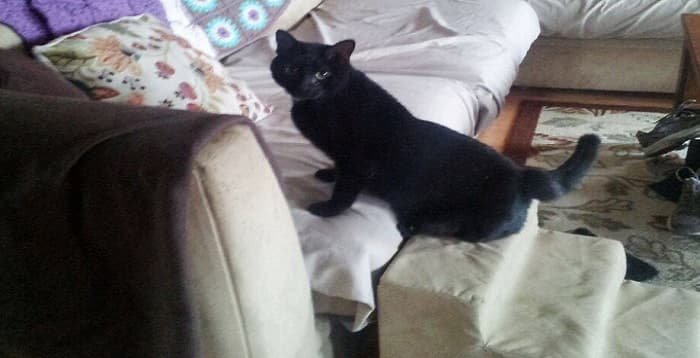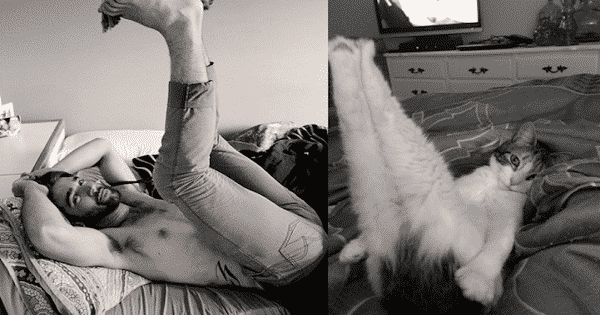Free-roaming stray cats are going to be avoiding sure death at the Broward County shelter under a new program allowing them to be sterilized and dropped back into the neighborhoods.
The recent reversal in longtime county policy dramatically increases the odds for feral cats to leave the county animal shelter and not be euthanized. Nearly all cats who aren’t sick avoid euthanasia at the shelter now, a statistical leap that for the first time gives cats better survival odds there than dogs get, county officials said.
“It’s a whole new day,” said Thomas Adair, who is the county’s new director of the Animal Care and Adoption Division. “Yesterday we were closed. I went back into our stray cat room and I want to say there were four. In our adoption room, there were like seven.”
A year ago, there would have been “at least 100” cats, Adair said.
Broward commissioners adopted the policy change in September, allowing shelter staff to immediately sterilize, vaccinate and return cats, rather than waiting three days, and thus authorizing their return to the streets where they were living.
A vote on Tuesday, approving blank “shell” agreements with service providers who will soon partner with the county, will allow the program to fully launch, Adair said. Service providers will be paid $50 for each cat.
But already, since a test version of the program began in September, 566 feral cats in the county shelter have been vaccinated, spayed or neutered and returned right to where they were found.
The program, dubbed “Return To Field,” is one of a host of new initiatives meant to help Broward achieve the “no kill” animal care policy commissioners fully embraced in April 2012.
“The whole premise is so that nothing can fill that void if we put an animal back into a spot it maintains,” Adair said. “We’re allowing that cat to consume the resources in that area that another cat that’s not sterilized can’t come in and do.”
When it comes to getting out of the county’s animal shelter alive, a cat’s odds were the most bleak. Stray cats reproduce at a mind-boggling rate year-round in South Florida’s balmy climate, and unless a rescue group took them, they were largely considered to be unadoptable and were euthanized, county statistics have shown.
In December 2014, only 56 percent of all cats — including house cats — left the county shelter alive. In December 2015, that number increased to 88 percent.
Since October, when the county budget year began, the live release rate for dogs is at 77 percent, Adair said. For cats, it is 78 percent.
Adair said it’s taken a few years to lay the foundation — research, ordinance changes, funding and partnerships — to finally carry out the county’s “no kill” goal.
Some other elements of the “no kill” initiative that have been approved:
• A trap-and-release program will allow the county to hire specialists to go to areas with the highest numbers of feral cats to trap, sterilize, vaccinate and then return them. Eventually the stray cat population is expected drop, Adair said. Commissioners approved a shell agreement for that service Tuesday also.
• A new 40,000-square-foot county animal care and adoption center will be opened by June, replacing the old shelter, county Environmental Protection and Growth Management Director Cynthia Chambers said.
• Next week, a portable veterinary clinic is expected to arrive, allowing the county to increase the amount of low-cost spay-neuter services. The county bought the $94,000 FORTS portable clinic from a company located in Coconut Creek. The Humane Society of Broward County CEO Christopher Agostino said his organization will carry out all the surgeries. The Humane Society and county had talked about building a mass spay-neuter clinic as a joint venture, but Chambers said this route was faster. It will be set up first in Rev. Samuel Delevoe Memorial Park in northwest Fort Lauderdale. At least 400 dogs and cats will be sterilized each month, Chambers said.
• Free sterilization of pets will be offered to low-income pet parents. Under the “SNIP” program or Spay Neuter Incentive Program, those with median incomes would pay $10, and those earning more would pay $70. Those with low incomes would pay absolutely nothing. In addition, sterilization would be free to any owner of a cat or a dog that will weigh over 40 pounds as an adult. Commissioners Tuesday also approved SNIP agreements allowing this program to move ahead.
• The county changed how dogs and cats brought into the shelter are managed. Previously, the county waited three days for an owner to retrieve the animal. Now if the dog or cat has a microchip, the county immediately makes attempts to return the pet. If there is no microchip, the county can release the cat through adoption, to a rescue group or by some other method without having to wait.
“It’s all very exciting for our overall save rate,” said Chambers.
The county will give no-kill updates online at www.broward.org/animal.







